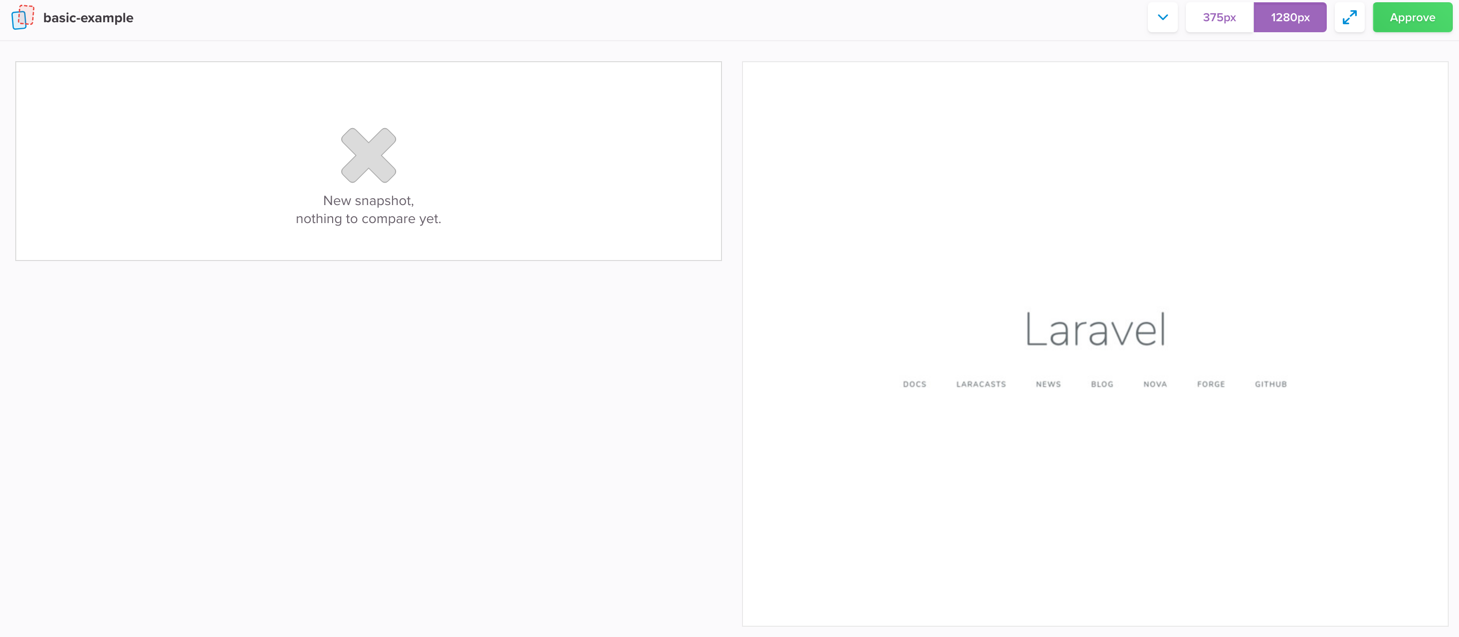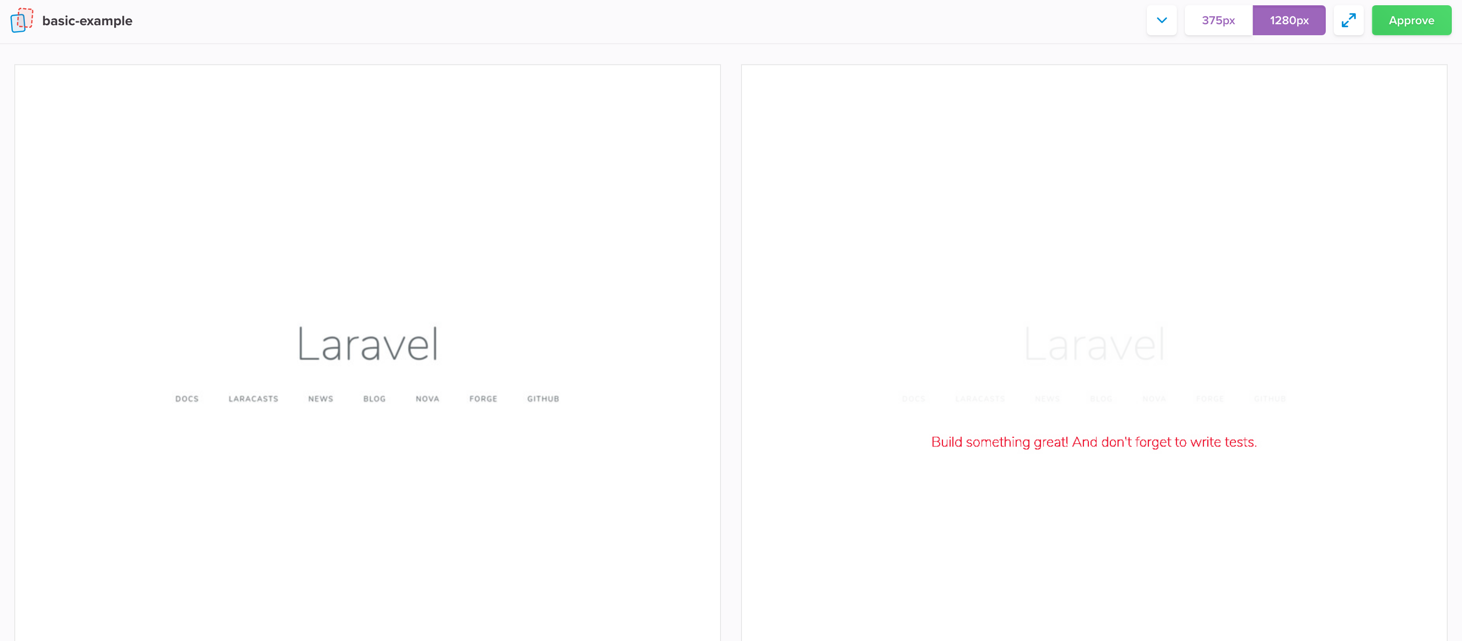This package extends Dusk with the ability to do visual diffs with the Percy visual testing platform.
If you are new to the idea of visual testing we recommend reading through Visual testing and visual diffs on the Percy blog.
Sometimes called visual regression testing or UI testing, visual testing is the process of automatically discovering and reviewing software for perceptual changes.
Visual testing is all about what your users actually see and interact with.
This form of testing is very useful in cases where you want to guard against unexpected changed to your UI. Visual testing is not meant to replace your Laravel unit/feature/browser tests, but rather provide another tool in your testing toolbox.
This package integrates with Laravel Dusk. If you haven't already, first go through the Dusk installation steps and make sure you can run the example test with php artisan dusk.
Next:
-
Sign up for a free account at percy.io and create your first project. Put your
PERCY_TOKENin your Laravel .env file (or specific dusk environment files if you are using those).PERCY_TOKEN=aaabbbcccdddeeefff -
Install the
@percy/agentNPM package.npm install --save-dev @percy/agent -
Install this composer package.
composer require stechstudio/laravel-visual-testing --dev
To take a snapshot call snapshot() on the browser instance in any of your Dusk tests.
$browser->visit('/auth/login')
->snapshot();Then run your test suite like your normally would.
php artisan dusk
By default the name of your snapshot will be the relative URL of the page (e.g. /auth/login). You can also pass in your own name when taking the snapshot.
$browser->visit('/auth/login')
->snapshot('Login page');You can pass in an array of options when taking a snapshot:
widths: An array of integers representing the browser widths at which you want to take snapshots.minHeight: An integer specifying the minimum height of the resulting snapshot, in pixels. Defaults to 1024px.
$browser->visit('/auth/login')
->snapshot('Login page', [ 'widths' => [768, 992, 1200] ]);If you want to run your tests without snapshots, use the --without-percy command line option.
Percy uses a variety of strategies to determine the optimal base build for comparison. For details see Base build selection.
If you want to override and specify your own base you have two options:
--percy-target-branch: Specify base by branch name--percy-target-commit: Specify by target commit SHA (only works if there is a finished Percy build for that commit)
Open the example test at tests/Browser/ExampleTest.php. Add a call to snapshot() right after the visit, and pass in a name for your snapshot.
public function testBasicExample()
{
$this->browse(function (Browser $browser) {
$browser->visit('/')
->snapshot('basic-example') // <-- add this
->assertSee('Laravel');
});
}Now go run your test:
php artisan dusk
If all goes well, you should see output similar to this:
$ php artisan dusk
[percy] created build #1
[percy] percy has started.
[percy] snapshot taken: 'basic-example'
. 1 / 1 (100%)
Time: 2.37 seconds, Memory: 22.00MB
OK (1 test, 1 assertion)
[percy] stopping percy...
[percy] waiting for 1 snapshots to complete...
[percy] done.
[percy] finalized build #1
Now go check out your Percy dashboard, and you should see the new build.
At this point it won't have anything to compare the snapshot to. But if you go modify the welcome.blade.php file and run it again, you'll get a nice visual diff of your change.



